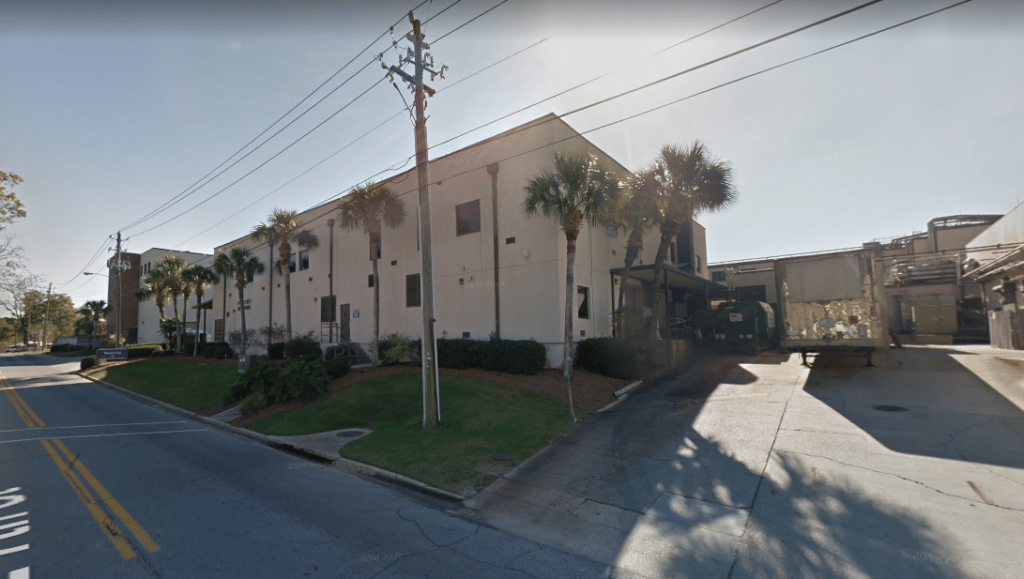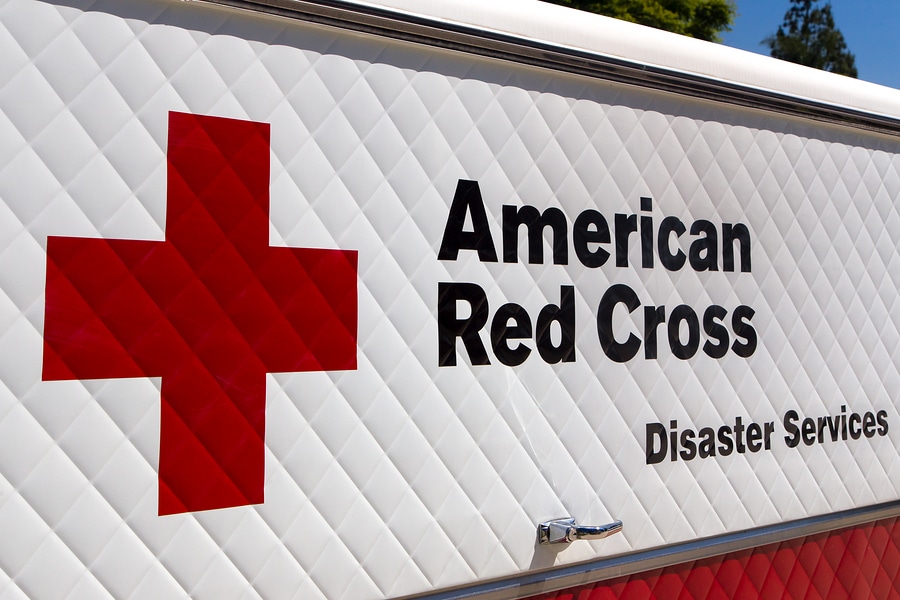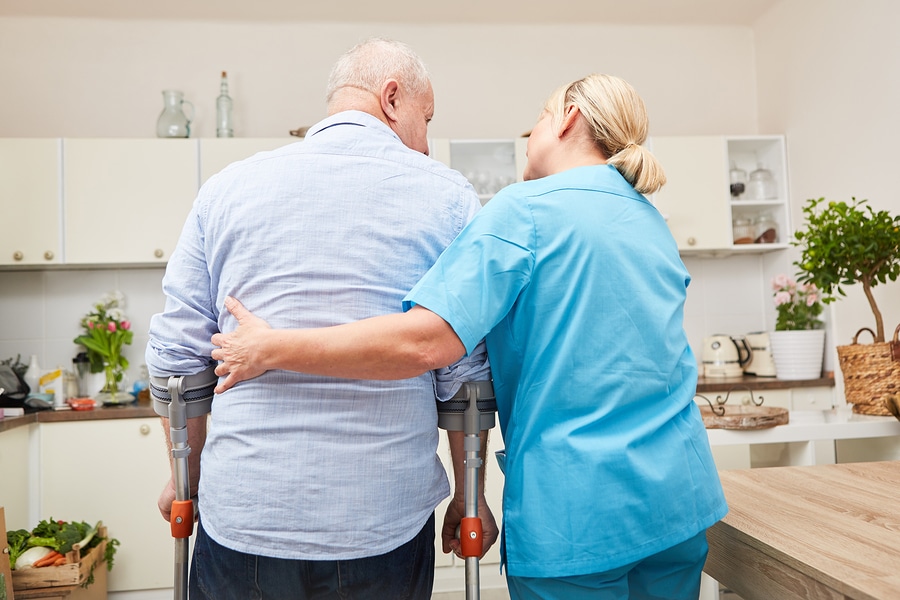Panama City Hospitals Closed, Evacuating Patients After Hurricane Michael

Panama City’s largest healthcare facilities have mostly shut down in the wake of Hurricane Michael’s impact on Wednesday and began evacuating patients Thursday morning. Gulf Coast Regional Medical Center said the hospital’s ER will remain open, but main hospital services have been suspended. Bay Medical Center Sacred Heart (BMSH) began evacuations at 3 a.m. Thursday morning and moved patients to Sacred Heart Hospital in Pensacola, Florida, Providence Hospital in Mobile, Alabama and St. Vincent Healthcare in Jacksonville, Florida, according to a Twitter post. About 200 patients, including 39 intensive care patients, will be evacuated over a 48-hour period. The hospital said no patients were injured during the storm. “All patients, family members, and staff are safe and patient care will continue until the last patient is transferred,” BMSH CEO Scott Campbell said in a press release. “If patients do not have a family member or other support persons with them at the hospital, we are reaching out to their emergency contacts.” 1 of the County Hospitals (Sacred Heart) aka Bay Medical Center on MLK … Gulf Coast Regional has suffered damage as well. Waiting to hear back from them regarding where my Grandmother is being transported. #hurricanemichael #panamacity pic.twitter.com/m6Rg0bJLOV — L Miller (@ohlizalizaliza) October 11, 2018 The hospital sustained significant structural and water damage, including a section of roof that collapsed in the hospital’s materials management building which damaged items needed for long-term care. The hospital plans to keep the ER open as the generator still has power. “Our staff and physicians have demonstrated extraordinary dedication throughout this crisis, providing exemplary care for our patients,” Campbell said. “This has been a truly noble effort and we are deeply grateful for their sacrifice.”
Hurricane Florence: Online Resources And How To Help

Hurricane Florence was one of the worst storms ever to hit the North Carolina and South Carolina coastline, causing an estimated $17 billion in damages and displacing hundreds of thousands of residents. Disaster relief workers are helping residents pick up the pieces, but there are still ways those outside of the area can help. We’ve compiled a list of online resources that travelers and local residents can use to stay informed and safe during this crisis, as well as how they can help aid disaster relief efforts. We will update this list with new information whenever possible. Click here for our other Hurricane Florence story, which has regular updates about the storm and how state officials and hospitals are responding. Hurricane Safety Checklist Places to Donate or Volunteer Find/Provide Free Disaster Relief Temporary Housing Free Data Recovery For Damaged Computers Free Telehealth Services for Disaster Patients Hurricane Safety Checklist Regardless of where you are located or if you’re working at a hospital during the storm, your first priority is to have a disaster plan in place to protect yourself and your family in a time of crisis. The American Red Cross has provided a hurricane safety checklist that has everything you can do to prepare for the storm and respond to the aftermath. We’ve provided a PDF of the checklist below, but you can also download or view it here: Hurricane Checklist Where You Can Donate and Volunteer American Red Cross The American Red Cross, which will respond to a majority of the crisis areas affected by Hurricane Florence, is currently accepting donations. Donate to American Red Cross here >> Americares Americares is based out of the U.S. but also responds to international crisis areas. They are gathering resources and supplies to support Hurricane Florence relief efforts. Donate to Americares here >> National Voluntary Organizations Active in Disaster (NVOAD) NVOAD is currently accepting donations for Hurricane Florence relief efforts. They have also compiled a list of places where you can connect with volunteer organizations on the ground if you want to directly assist. Find more information or donate here >> Free Temporary Housing (To Use Or Provide) Airbnb Open Homes The Airbnb Open Homes Program is currently providing free temporary housing from Sept. 10 to Oct. 1 for displaced homeowners and relief workers affected by Hurricane Florence. Residents in surrounding areas can also list their homes through the Open Homes program to provide shelter to those in need. If you need to find temporary housing: Create an Airbnb account. Visit this link: https://www.airbnb.com/welcome/evacuees/hurricane-florence-2018 Click the “Find Shelter” button If you want to help provide temporary housing: Create an Airbnb account. Visit this link: https://www.airbnb.com/welcome/evacuees/hurricane-florence-2018 Click the “Sign up your home” button Follow the step-by-step process to place your listing Free Data Recovery TTR Data Recovery, based out of Fairfax, Virginia, is currently offering free data recovery on hard drives and flash media for victims of Hurricane Florence. The company will service any PC owned by users directly affected by the storm and businesses will receive an additional discount, according to their website. Customers may still be responsible for costs of replacement components and shipping, if necessary, and must ship their damaged device no later than Oct. 1. They must also provide proof of residence in South Carolina or North Carolina. For more information on the service, visit their website here: TTR Data Recovery Hurricane Florence Relief Free Telehealth Services These organizations are offering free telehealth services for Hurricane Florence victims, according to Becker’s Hospital Review: Telehealth vendors: American Well MDLive via code “Florence” DoctorOnDemand Teladoc Payers: Anthem via the LiveHealth Online app Capital BlueCross via the Capital BlueCross Virtual Care iOS or Android mobile app Hospitals and health systems: Charleston-based Medical University of South Carolina via code “MUSCFLO,” etv reports. Chapel Hill, N.C.-based UNC Health Care via code “UNCFLORENCE2018” on the UNC Urgent Care 24/7 app Track Hurricane Florence Google has provided a map tool that will let you actively track Hurricane Florence as it moves through the U.S. You can find critical information, like traffic flow or the locations of evacuation resources, by clicking the “Layers” tab and clicking the checkboxes next to things you want to see on the map. Make sure to refresh the page periodically to see the most up-to-date version of the storm’s movement.
Trying To Protect Seniors, The Most Vulnerable, From Formidable Foe Florence

Liz Szabo, Kaiser Health News and JoNel Aleccia, Kaiser Health News and Doug Pardue Perhaps no other population is as vulnerable during a hurricane as frail, older adults, especially those who are homebound or living in nursing homes. With Hurricane Florence predicted to slam the North Carolina coast Friday, health officials are already scrambling to keep older residents safe. Seniors “are not only the most likely to die in hurricanes, but in wildfires and other disasters,” said Dr. Karen DeSalvo, a New Orleans native who served as health commissioner in that city after Hurricane Katrina and went on to be named acting assistant secretary for health at the Department of Health and Human Services for the Obama administration. “The seniors always seem to bear a big brunt of the storms.” Older people may have a harder time evacuating because they don’t have their own cars or are homebound, said Lauren Sauer, director of operations at the Johns Hopkins Office of Critical Event Preparedness and Response in Baltimore. In the aftermath of Hurricane Katrina, an analysis of 986 Louisiana residents who died showed the mean age of victims was 69 and nearly two-thirds were older than 65, DeSalvo said. The dead included 70 people who died in nursing facilities during the storm or just after the storm made landfall. And last year, 12 residents overheated and died at a facility in Hollywood Hills, Fla., in the immediate aftermath of Hurricane Irma, which knocked out the facility’s air conditioning and the temperature climbed to over 95 degrees. The tragedy led Florida to pass legislation requiring nursing homes and assisted living facilities to have backup generators capable of keeping residents cool. “Unfortunately, the best wake-up call is when a tragedy occurs,” said Dara Lieberman, senior government relations manager at the Trust for America’s Health, a nonprofit. “Hopefully, nursing facilities and emergency managers paid attention to the loss of life in the long-term care facility in Florida last year and realize the risks they face by not preparing. Every facility should have a plan.” Some studies suggest communities aren’t much better prepared than in the past, however. A 2018 study from the National Academy of Sciences found that “we are only marginally more prepared to evacuate vulnerable populations now than we were during Hurricane Katrina,” Sauer said. Deciding whether to stay or go can be more complicated than it sounds, said J.T. Clark of the Near Southwest Preparedness Alliance, a coalition of hospitals and other public health services in southwestern Virginia. “There is a risk of moving people and there is a risk of staying in place, and you have to weigh those risks,” Clark said. Evacuations pose a number of dangers for fragile patients, some of whom may need oxygen or intravenous medications, said Sauer. She pointed to a 2017 study that found a sharp increase in mortality among nursing home residents who evacuated because of an emergency, compared with those who sheltered in place. She noted that leaving a facility is only part of the challenge; it can be equally difficult to find a safe place prepared to house evacuated nursing home residents for days at a time, she said. Clark said that nursing homes once commonly assumed they could simply transfer their residents to local hospitals. But that can impair a hospital’s ability to care for people who need emergency and urgent care, he said. Many nursing homes in the Carolinas are evacuating residents to areas outside the storm’s direct path. South Carolina had evacuated 32 nursing homes and assisted-living facilities by Wednesday afternoon, said Randy Lee, president of the South Carolina Health Care Association. On the Outer Banks of North Carolina, Sentara Healthcare evacuated 65 residents from a nursing home in Currituck to the company’s medical centers in Hampton Roads, Va., spokesman Dale Gauding said. Hurricane Florence poses risks beyond the coasts, however. Sentara also moved five intensive care patients out of a medical center on the Pasquotank River in Elizabeth City, N.C., because of the risk of flooding. Those patients also went to hospitals in Hampton Roads, Gauding said. With Norfolk, Va., now expected to escape the brunt of the storm, the 88 residents at the Sentara Nursing Center there are sheltering in place, Gauding said. Nursing homes in Charleston, S.C., complied with mandatory evacuation orders, said Kimberly Borts, director of communications and charitable giving for Bishop Gadsden retirement community on Charleston’s James Island. She said the facility conducts annual evacuation drills to continually improve its capability to safely relocate residents and coordinate with the company that provides ambulances. However, Hurricane Florence’s expected landfall caused a slight change in evacuation plans, which were to be completed by Monday, Borts said. The evacuation had to be delayed until Tuesday because the ambulances were diverted to Myrtle Beach, which remained in Hurricane Florence’s sights. As of Wednesday afternoon, New Hanover Regional Medical Center in Wilmington, N.C., was directly in the storm’s path. But hospital officials view the building as strong enough to withstand the storm, said spokeswoman Carolyn Fisher. They were less confident about a building housing a skilled nursing facility in Pender County, N.C., whose residents are being moved away from the hurricane’s projected course. Senior citizens who live at home are also at risk, especially if they lose electricity. More than 2.5 million Medicare recipients — including 204,000 people in Virginia, North Carolina and South Carolina — rely on home ventilators, oxygen concentrators, intravenous infusion pumps and other electrically powered devices, according to the Centers for Medicare & Medicaid Services. The agency has created a tool called emPOWER 3.0 to help states check up on them. Patients who lose electricity may need to go to their local emergency room to power their medical equipment, said Mary Blunt, senior vice president at Sentara Healthcare in Norfolk, Va., and interim president of Sentara Norfolk General Hospital. Patients with kidney failure also may need to receive dialysis at the ER if their regular dialysis center is closed, she said. Virginia, North
